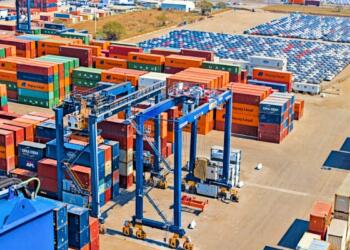
Over time, supply chains have developed needs and challenges that are faced with new trends, that is, more and more visibility is required at each step to have control of the operation, which is why a control tower has a great contribution to this activity.
In the Visibility and Control Tower in the Supply Chain panel , organized by the National Council of Logistics and Supply Chain Executives (ConaLog), Erik Markeset, general director of Tsol , explained that the purpose of the control tower is to monitor , manage and control the supply chain , integrating all systems; Furthermore, it is based on technology.
He explained that initially this control tower was based on a dashboard that was fed manually , later it was integrated with business intelligence systems and increasingly with different technologies; so little by little it is moving from visibility to intelligence, through artificial intelligence the control towers are helping to solve different problems and make recommendations, they are even moving towards execution in the systems to respond to a change without the involvement of the logistics operator.
“It allows the organization to prioritize and understand what is happening. At the end of the day, we in the logistics chain aim to fulfill our delivery promise in a more efficient way,” Markeset said.
In this sense, Javier Serrano, director of Conalog, pointed out that, according to PWC , 86% of more than 600 executives surveyed demand more solutions in traceability and visibility.
“The Covid tragedy brought some collateral benefits, finally the CFO turned around and gave some CapEx. Investment in the supply chain has become so relevant, today the issue of investments in different technologies has increased,” he said.
However, he pointed out that despite this, all the benefits required are still not being taken advantage of, since, for example, another GODIS Survey indicates that only 6% of executives mentioned having total visibility in real time of your supply chain.
Control tower in logistics
Jorge García, director of logistics and systems at Impulsora Sahuayo , indicated that the grocery store supplier company is based on data collection models.
That is, they take information from their 400 supplier manufacturers, which have more than 1,200 plants and distribution centers, 12,000 delivery routes to deliver to 22 Impulsora Sahuayo distribution centers, to reach 40,000 customers with 17,000 routes. monthly to reach more than 10 million end consumers.
“It is not a manufacturing network, therefore it is simpler than the manufacturers, but at the same time it is complex because it has a large number of alternatives and the forecast models become complicated,” García explained.
For his part, Christian Aranda, Solistica ‘s operational planning manager , indicated that the control tower is essential for the company to ensure that deliveries arrive on time and in proper form, so it must be adapted to each client .
For this reason, he pointed out that Solistica integrates this tower into its network of carriers, to be able to carry out analysis with robust data to deliver reports and have simplification and centralization of information.
Given this panorama, Jorge García indicated that it is necessary to have a strategy outlined and know what data or KPIs (performance indicators) need to be measured; in addition to having good integration in all the actors of the operation within the company.
On the other hand, Javier Serrano assured that there are main aspects for the implementation of a control tower. In the first instance, he pointed out that not everything has to be done in the company, that is, it is necessary to consider partners or specialists who can guide; as well as having a level of maturity of the tools and systems.
In addition, it is necessary to have talent trained in the use of these technologies and to empower the members of the tower to make decisions.
Comment and follow us on X: @jenna_GH_ / @GrupoT21















